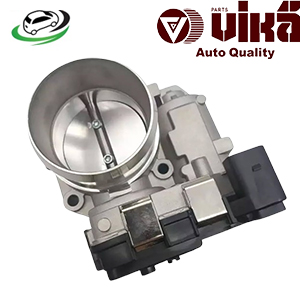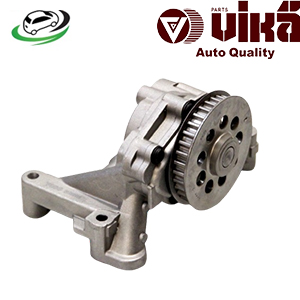-3%
Get VW Eos (1F7)/ Golf V (1K1)/ Golf VI (5K1)/ Golf Plus (5M1)/ Jetta V (1K2)/ Polo (9N3)/9N3/ Touran (1T1)/ AUDI A3 S3 (8P1) Belt Tensioner 03C145299C
A belt tensioner is a device that applies tension to the engine’s serpentine or timing belt, keeping it tight and ensuring that it operates smoothly. It helps to maintain the correct tension required for optimal performance and efficiency, preventing slippage and wear of the belt. The belt tensioner is typically spring-loaded and adjusts automatically to changes in tension as the engine operates.
2. Function of a Belt Tensioner
The primary functions of a belt tensioner include:
1. Maintaining Proper Belt Tension
- The tensioner applies constant pressure to the belt, keeping it tight enough to prevent slipping while allowing for the natural expansion and contraction of the belt as it heats up during engine operation.
2. Compensating for Wear and Stretch
- Over time, belts can stretch and wear out. A tensioner compensates for this wear, ensuring the belt remains tight enough to transmit power effectively.
3. Reducing Vibration and Noise
- A properly functioning belt tensioner helps absorb engine vibrations, reducing noise and preventing excessive wear on the belt and related components.
4. Facilitating Smooth Operation
- By ensuring the belt remains taut, the tensioner allows for the smooth operation of various engine accessories, contributing to overall engine performance.
3. Types of Belt Tensioners
Belt tensioners can be categorized into several types based on their design and function:
1. Automatic Belt Tensioners
- Most modern vehicles use automatic tensioners that adjust tension based on spring-loaded mechanisms. These tensioners automatically compensate for changes in belt tension, ensuring optimal performance without the need for manual adjustments.
2. Manual Belt Tensioners
- Older vehicles often utilize manual tensioners, which require the driver or mechanic to adjust the tension manually. This type of tensioner typically includes a bolt or lever to increase or decrease tension.
3. Spring-Loaded Tensioners
- Spring-loaded tensioners use a coil spring to maintain tension on the belt. These tensioners provide constant pressure and are common in many modern automotive applications.
4. Hydraulic Tensioners
- Hydraulic tensioners use hydraulic pressure to maintain tension on the belt. They are less common but can provide a precise and stable tension.
4. Components of a Belt Tensioner
A typical belt tensioner consists of several components that work together to maintain belt tension:
1. Tensioner Arm
- The arm is the lever that applies pressure to the belt. It pivots around a fixed point and is designed to move in response to changes in belt tension.
2. Spring
- The spring provides the necessary force to keep the tensioner arm pressed against the belt. It is designed to absorb vibrations and maintain constant tension.
3. Pulley
- The pulley is attached to the tensioner arm and provides a smooth surface for the belt to ride on. It helps guide the belt and reduces friction.
4. Mounting Bracket
- The mounting bracket secures the tensioner to the engine. It is designed to withstand the forces exerted by the tensioner and the belt.
5. Benefits of a Belt Tensioner
The belt tensioner offers several advantages that contribute to overall engine performance and longevity:
1. Enhanced Engine Performance
- By maintaining proper tension on the belt, the tensioner ensures that engine components operate efficiently, improving overall engine performance.
2. Reduced Wear and Tear
- A well-functioning belt tensioner helps minimize wear on the belt and associated components, extending their lifespan and reducing the frequency of replacements.
3. Improved Fuel Efficiency
- Proper belt tension can contribute to better fuel efficiency by ensuring that engine accessories, such as the alternator and water pump, operate effectively without excessive resistance.
4. Noise Reduction
- A properly adjusted tensioner minimizes vibrations and noise generated by the belt, resulting in a quieter engine operation.
5. Easier Maintenance
- Automatic tensioners reduce the need for frequent manual adjustments, making maintenance easier for vehicle owners and mechanics alike.
6. Common Problems with Belt Tensioners
Despite their importance, belt tensioners can experience issues over time. Some common problems include:
1. Worn Out Tensioner
- Over time, the spring and other components of the tensioner can wear out, leading to inadequate tension on the belt. This can cause the belt to slip or wear prematurely.
2. Sticking or Binding
- Dirt, debris, or lack of lubrication can cause the tensioner arm to stick or bind, preventing it from adjusting properly. This can lead to uneven tension on the belt.
3. Damaged Pulley
- The pulley may become damaged or misaligned, causing the belt to wear unevenly or slip off entirely. A damaged pulley can also create excessive noise.
4. Failure of Automatic Tensioner
- Automatic tensioners can fail due to spring fatigue or internal hydraulic issues, resulting in poor belt tension and affecting engine performance.
7. Symptoms of a Failing Belt Tensioner
It’s essential to recognize the symptoms of a failing belt tensioner to prevent further damage to the engine or its components:
1. Squeaking or Chirping Noises
- A failing tensioner may produce squeaking or chirping noises, indicating that the belt is slipping or not maintaining proper tension.
2. Belt Wear or Fraying
- If the belt appears worn, frayed, or damaged, it may be due to improper tension, which can lead to further issues.
3. Engine Overheating
- If the water pump is driven by the serpentine belt and the tensioner is faulty, the water pump may not function effectively, leading to engine overheating.
4. Loss of Accessory Power
- If the belt becomes loose due to a failing tensioner, engine accessories such as the alternator or power steering may not receive adequate power, affecting vehicle performance.
8. Maintenance Tips for Belt Tensioners
Regular maintenance can help ensure the longevity and proper functioning of a belt tensioner:
1. Inspect Regularly
- Regularly check the belt tensioner for signs of wear, such as cracks or damage to the pulley or arm. Look for signs of belt wear, such as fraying or cracking.
2. Check Belt Condition
- Inspect the serpentine or timing belt for any signs of wear or damage. Replace the belt if it shows signs of significant wear, as a worn belt can stress the tensioner.
3. Listen for Noises
- Pay attention to any unusual noises coming from the engine, especially during startup or acceleration. Squeaking or chirping noises can indicate issues with the tensioner or belt.
4. Ensure Proper Alignment
- Check that the belt and tensioner are properly aligned. Misalignment can lead to premature wear and failure of the belt and tensioner.
5. Replace as Needed
- Follow the manufacturer’s recommendations for belt and tensioner replacement intervals. If you notice any symptoms of a failing tensioner, replace it promptly to avoid further damage.
Conclusion
The belt tensioner plays a vital role in the operation of an engine’s serpentine or timing belt, ensuring proper tension and alignment. Understanding its functions, types, benefits, and common problems can help vehicle owners maintain their engines effectively. Regular inspection and maintenance of the belt tensioner can lead to enhanced engine performance, improved fuel efficiency, and a longer lifespan for both the belt and associated components. Being proactive in addressing any issues with the tensioner can prevent more significant engine problems down the road, contributing to a smoother and more reliable driving experience.
Follow us on Facebook for more parts.




Reviews
Clear filtersThere are no reviews yet.